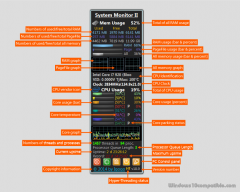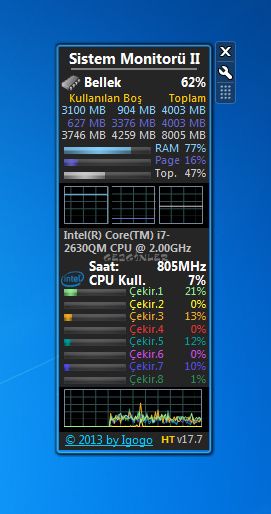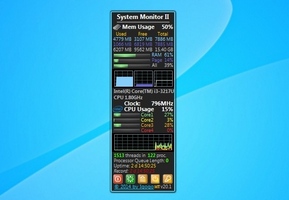

#System monitor ii infected how to
In this regard, ideas about how to approach this situation may be gained by looking at other chronic diseases such as diabetes –, chronic obstructive pulmonary disease – or congestive heart failure –, which have made use of telemedicine for several years now. As a result there is a need to optimise health resources, both in terms of infrastructure and staffing levels. However, there is still no cure for the infection and the number of chronic HIV-infected patients is increasing year by year, thereby placing greater demands on healthcare systems. In addition, patients need to be closely monitored in order to maximise their adherence to medication, and therefore prevent the development of resistance.įor the infectious diseases physician the follow-up of a chronic HIV patient has become easier, because these patients are relatively young, show few comorbidities and do not require complex monitoring, simply a blood test and routine appointments every three months to check on results. This clinical routine can interfere with patients' attempts to return to normality in their daily lives, and may create problems with employers due to work absences. This situation requires a completely new approach to care of the HIV/AIDS patient.įor patients, a chronic disease course means visiting their hospital every three months, first to perform a blood test, second for the follow-up appointment and, finally, to collect their medication from the hospital pharmacy. Patients who would previously have been terminally ill are now chronically ill, and palliative care has become chronic care.

Since the appearance of highly active antiretroviral treatments (HAART) the process of HIV/AIDS becoming a chronic disease in the industrialised world has led to a dramatic change in the illness paradigm. This does not alter our adherence to all the PLoS ONE policies on sharing data and materials."


JM Gatell has received honoraria or research grants from Bristol-Myers Squibb, MSD, GlaxoSmithKline, Gilead Sciences, Tibotec, Roche, Boehringerngelheim, Abbott and Pfizer. J Mallolas and JM Miro have received research grants from Abbott, Boehringer-Ingelheim, Bristol-Myers Squibb, Gilead Sciences and Roche. E Martinez, F García, J Blanch and JL Blanco have received research grants from Abbott, Bristol-Myers Squibb, and Gilead Sciences. Neus Canal is employed by a commercial company, Health Economics and Outcomes Research IMS Health. The funders had no role in study design, data collection and analysis, decision to publish, or preparation of the manuscript.Ĭompeting interests: A León, C Cáceres, E Fernández, P Chausa, M Martin, C Codina, A Rousaud, A Milinkovic, M Laguno, M Larrousse, L Zamora, and EJ Gómez have no potential conflicts of interests. The role of Health Economics and Outcomes Research IMS Health in the study had been only to analyze the patients' quality of life data. León is supported by Contract CM06/00170 from the Institut de Investigacions Biomèdiques August Pi I Sunyer and Fundació Clínic in collaboration with the Spanish Health Department. This is an open-access article distributed under the terms of the Creative Commons Attribution License, which permits unrestricted use, distribution, and reproduction in any medium, provided the original author and source are credited.įunding: Dr. Received: Accepted: DecemPublished: January 21, 2011Ĭopyright: © 2011 León et al. PLoS ONE 6(1):Įditor: Rupert Kaul, University of Toronto, Canada (2011) A New Multidisciplinary Home Care Telemedicine System to Monitor Stable Chronic Human Immunodeficiency Virus-Infected Patients: A Randomized Study. Citation: León A, Cáceres C, Fernández E, Chausa P, Martin M, Codina C, et al.


 0 kommentar(er)
0 kommentar(er)
